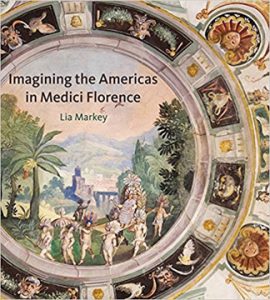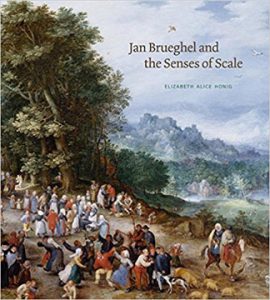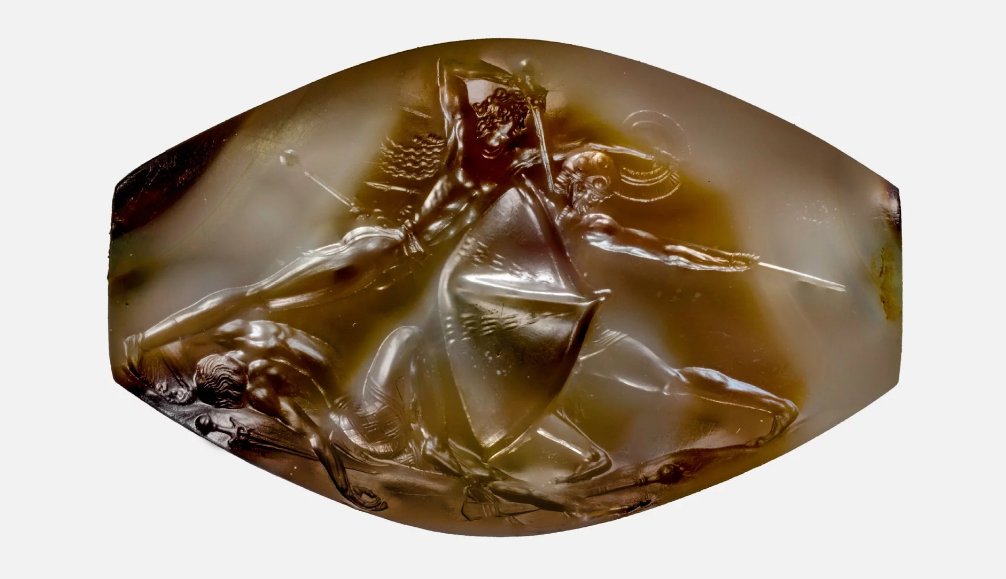CAA News Today
Advocacy Works
posted by CAA — November 20, 2017
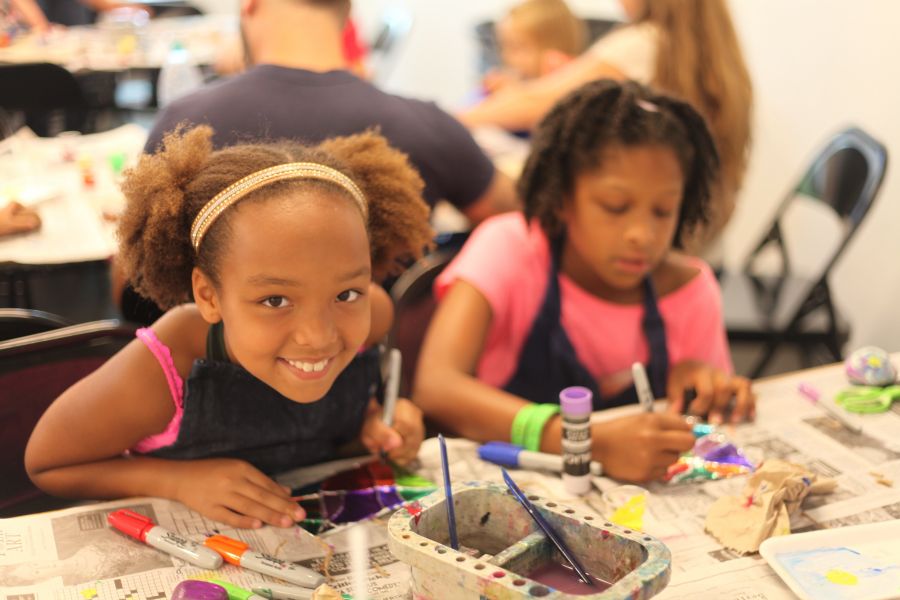
Supported by the NEH, Louisville’s Cultural Pass Program gives youth the chance to take art classes, in addition to providing them access to museums and other institutions. Image: Louisville-Jefferson County Metro Government
Last week, I attended a talk by Stephen Kidd, the executive director of the National Humanities Alliance. Steve reported that despite the White House’s attempt to zero out the National Endowment for the Humanities (NEH), the current House budget proposes level funding for the Title VI programs and the Institute of Museum and Library Services (IMLS). Their budget also envisions $145 million for the NEH, only a $5 million cut from last year.
Today, the Senate released a draft bill that provides $149.8 million in funding for the National Endowment for the Humanities for Fiscal Year 2018. Providing the same funding level as FY 2017 and $2 million above FY 2016, this bill is a forceful rejection of the administration’s call to eliminate the NEH.
Steve pointed out that these developments are a direct result of the grassroots advocacy by many artists and scholars, in particular, members of organizations such as CAA. All told, more than 200,000 messages were sent to members of Congress and they clearly had an impact.
If you get a moment, take a look at NEH for All: https://nehforall.org/. The Mellon-funded project highlights the impact that NEA-funded projects have across the nation.
Many thanks for all of your advocacy!
Hunter O’Hanian
Executive Director and Chief Executive
Jason Bernagozzi and Victoria Bradbury
posted by CAA — November 20, 2017
The weekly CAA Conversations Podcast continues the vibrant discussions initiated at our Annual Conference. Listen in each week as educators explore arts and pedagogy, tackling everything from the day-to-day grind to the big, universal questions of the field.
This week, Jason Bernagozzi, assistant professor of Electronic Arts at Colorado State University and co-founder of experimental media arts residency program Signal Culture, and Victoria Bradbury, a new media artist, researcher @CRUMB, and assistant professor of New Media at University of North Carolina Asheville, discuss teaching new media.
New in caa.reviews
posted by CAA — November 17, 2017
Mark Rosen discusses Imagining the Americas in Medici Florence by Lia Markey. Read the full review at caa.reviews.
Stephanie Porras reviews Jan Brueghel and the Senses of Scale by Elizabeth Alice Honig. Read the full review at caa.reviews.
Action Needed! The House’s Bill on Tax Reform Punishes College Students
posted by CAA — November 17, 2017
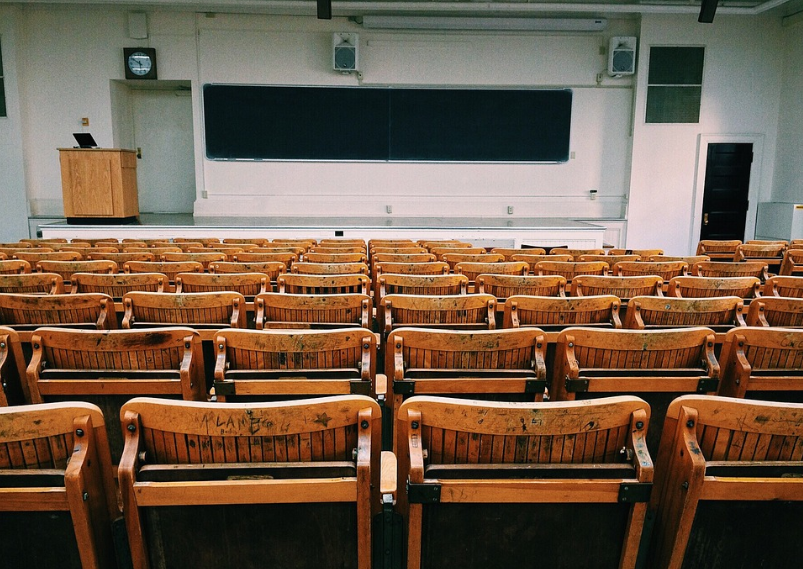
Yesterday, the House of Representatives passed a tax reform bill, titled the “Tax Cuts and Jobs Act,” that harms the lower and middle class, and puts harsh financial burdens on college students and recent graduates of college. Additionally, the House bill contains a provision that would end the deduction of student loan interest for tax payers. Nearly 12 million people claimed this deduction in 2015.
“This is a very cynical approach to higher education,” said CAA executive director Hunter O’Hanian. “To tax students on money they don’t earn and not allow them to deduct the amount of their student loans will have a chilling effect on higher education in America. These are the future scholars of this country. They are the ones who will preserve our cultural heritage as a nation. It is absurd to imagine that the US House of Representatives seeks to dumb-down future generations in this way. Everyone needs to contact their representatives in the House and Senate and strongly advocate that that this measure never becomes law.”
Under the House version of the bill, graduate students and doctoral candidates would be taxed on the waivers their schools provide them in return for working on campus as part of their professional development in their fields. The New York Times published a piece yesterday by Erin Rousseau, a graduate student at M.I.T., who receives nearly $50,000 in waivers each year. These waivers make school affordable for students, a financial support lifeline to those who otherwise would not be able to pursue graduate educations. The new House tax bill would increase Erin’s taxable income to an imaginary $80,000 a year, pushing her tax burden up by $10,000 a year.
With Congress aiming to pass this bill just as quickly as the House did, it is urgent to speak out now.
Click here to urge Congress to oppose this provision
Read more on the issue:
The House just passed its big tax bill. Here’s what is in it. (The Washington Post)
The House Just Voted to Bankrupt Graduate Students (New York Times)
The Republican Tax Plan Could Financially Devastate Graduate Students (The Verge)
A Call for Dialogue and Discussion | Embracing and Supporting Diverse Voices: Writing About and Making Art in the 2010s
posted by CAA — November 17, 2017

In June 2017, Scaffold, a sculpture by the artist Sam Durant, ignited protests among Dakota Sioux activists in Minneapolis where it was being installed at the Walker Art Center. After meeting with tribal elders, Durant and the Walker announced that the piece would be dismantled and burned in a Dakota ceremony. Announced recently, the Walker’s executive director Olga Viso will be stepping down at the end of 2017. Photo: Minneapolis Star Tribune/Zuma Press
As artists, designers, scholars, and other arts professionals, CAA members encompass an enormous range of voices and perspectives. Each of us has found an outlet for our intellectual and creative energies in a passionate commitment to a particular subfield or mode of cultural production.
We would like to open up a conversation about the relation between these two things: our diverse individual and collective positionalities and the subjects and questions we address in scholarly and artistic practices.
We find ourselves at a moment in which the individual and collective stakes of writers, artists, and curators are central to conversations, debates, and judgments about scholarly expertise and responsibility.
We are spurred in part by our observation that for some in the CAA community, these polarizations are having a chilling and possibly stunting effect on the research and creative directions one might choose to engage. The ways this ripples out into the field in the years to come can be imagined, but has yet to be realized in full.
CAA is committed to the open exchange of ideas and to nurturing and supporting scholars and artists in all fields, regardless of their individual ethnic, gendered, sexual, class-based, religious, or regional and national identification. We also acknowledge the deep asymmetries within societies in North America and around the world, and seek to work actively and incisively to challenge the hierarchies that still characterize our disciplines, our scholarly practices, and our lives as artists.
- What active and activist strategies and interventions might we pursue in the current polarized climate?
- Are there limits to what topics scholars and artists should address given their specific positionalities?
- Are there best practices to guide individuals in navigating these difficult waters with grace and attentiveness?
- How can CAA support scholars and artists whose work might come under attack because their positionality differs from the parameters of their subject matter?
We invite your thoughts, input, experiences, and wisdom: we are initiating this conversation so we can think or rethink our practices with the benefit of as much input as possible.
Affiliated Society News for November 2017
posted by CAA — November 16, 2017
Affiliated Society News shares the new and exciting things CAA’s affiliated organizations are working on including activities, awards, publications, conferences, and exhibitions. For more information on Affiliated Societies, click here.
Public Art Dialogue
The Fall 2018 issue of Public Art Dialogue journal will be devoted to the theme of “Public Art as Political Action.” The call for papers follows:
Public art is a process that often requires collaboration and compromise and, in the popular imagination, public art is also associated with the need for consent. However, the public sphere is an important place of dissent and many public art forms serve as interventions by critiquing the status quo, expressing dissatisfaction with the political powers that be, and questioning and reinterpreting historical narratives. This issue aims to examine topics surrounding protest art in the public realm. Submissions might explore the visual culture of protest movements; performances, projections, and posters that start public dialogues (physical and virtual) using visual means; historic or contemporary public art projects engaged with political protest. Submissions may also address how photography operates as a language of protest in the public realm. Though a resurgence in political art and protest brings contemporary art to the forefront, this issue also hopes to look at historic precedents for contemporary public protest art by revisiting the ephemera, public actions, and protest art of the past. Public Art Dialogue welcomes submissions from art historians, critics, artists, architects, landscape architects, curators, administrators, and other public art scholars and professionals, including those who are emerging as well as already established in the field.
Manuscripts are due March 1, 2018 and should be sent to PAD editorial assistant Sierra Rooney at r.sierra.rooney@gmail.com. PAD also seeks original artist projects submissions. All manuscripts and artist project submissions must follow the guidelines posted here. Original artist projects should be sent to PAD art editor Ashley Corbin-Teich at pad.artistprojects@gmail.com.
Association of Academic Museums and Galleries
AAMG Welcomes New VP of Membership Anna-Maria Shannon
Anna-Maria Shannon is the Interim Director for the Museum of Art at Washington State University. She has been part of the Museum of Art/Washington State University team for 21-years and is also assigned as the Associate Director. She is currently working to complete a 15-million dollar campaign for a new facility to be named the Jordan Schnitzer Museum of Art/WSU in the spring of 2018. Anna-Maria has a bachelor’s degree in Art History from the University of Puget Sound (’93), Tacoma, Washington and a Master’s in Design from Washington State University (’05), Pullman, Washington. She serves on various boards and committee both on campus and within the town of Pullman, Wa, where she lives happily (in her garden) with her husband, two sons and mother. More online: aamg-us.org
Association of Research Institutes in Art History
East Asia Fellowship Program
The Association of Research Institutes in Art History (ARIAH) is a consortium of 27 museums and research centers based in North America. ARIAH’s goal is to promote scholarship in art history and to foster intellectual exchange among art historians from different parts of the world. In pursuit of that goal, ARIAH has established a fellowship program that will enable scholars from countries in East Asia to conduct research at an ARIAH member institute on any topic in the visual arts.
Facts about the ARIAH East Asia Fellowship program:
- Applicants should hold an advanced degree and/or demonstrate a record of scholarly achievement. Scholars from the following countries are eligible to apply: Japan, Mongolia, People’s Republic of China (including Hong Kong and Macau), Republic of China (Taiwan), and South Korea. English-language competence (spoken and written) is required.
- Fellowships will last three to four months.
- Deadline for applications is December 31, 2017. ARIAH will notify awardees by April 1, 2018. Fellowships may begin no earlier than September 1, 2018, and must be completed by August 31, 2019.
- Fellowship awards will include cost of international travel, lodging, and other expenses.
- Number of fellowships offered: Four fellowships will be offered per year.
Complete information about the ARIAH East Asia Fellowship Program can be found at www.ariah.info/EAF. For more information, contact ea-fellowship@ariah.info.
Generously Funded by:
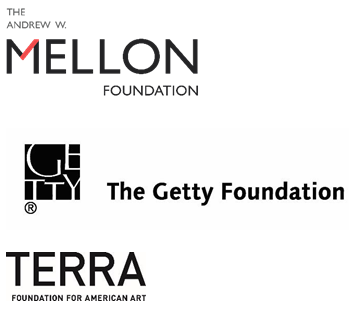
Association for Latin American Art
ALAA Graduate Student Travel Award
We are pleased to announce the annual ALAA Graduate Student Travel Award. The award, generously funded by former ALAA president Patricia Sarro, will provide $500 toward expenses related to attending the CAA annual conference, ALAA business meeting, and ALAA sponsored sessions. Funds may be put towards hotel costs, registration, or airfare/ground travel. The awardee need not be presenting (although presenters are encouraged to apply), but should demonstrate a specific need to attend sessions or visit archives in the conference city. To apply, please send a letter of interest, including your current research area, name of your university, program, advisor, and specific purpose for attending to the conference by email to Michele Greet (mgreet@gmu.edu) by October 31. The awardee will be selected by the executive committee and will be notified of his/her acceptance by November 15. Funds will be paid upon receipt of the award, but awardee must submit receipts to ALAA verifying that funds have gone toward conference expenses (within 2 weeks of returning from the conference). The awardee is also expected to attend the ALAA business meeting at the conference where he/she will be recognized as an award recipient. The awardee will also receive one year of complimentary ALAA membership.
Historians of German, Scandinavian, and Central European Art and Architecture
The Historians of German, Scandinavian, and Central European Art and Architecture (HGSCEA) will sponsor a session at the annual CAA conference in Los Angeles on Saturday, February 24 from 2 to 3:30 p.m. Chaired by Allison Morehead, “Critical Race Art Histories in Germany, Scandinavia, and Central Europe” will include papers by Rebecca Houze on the art colony at Gödölló, Patricia G. Berman on Nordic Vitalism, Bart Pushaw on Nordic art’s colonialist turn, and Kristin Schroeder on the paintings of Christian Schad.
HGSCEA members are also cordially invited to attend our annual dinner reception, which will take place on Thursday, February 22 from 7 to 9 p.m. near the LA Convention Center (location TBA). As always, the event is free for current members and provides an opportunity to meet old friends and make new acquaintances.
The winner of this year’s Emerging Scholar Publication Prize will be announced at the reception; this award of $500 is given to a current HGSCEA member who is either a graduate student or has received a PhD within the last five years, in recognition of a distinguished essay published in 2017 on any topic in the history of German, Scandinavian, or Central European art, architecture, design, or visual culture (submission deadline: December 18). Current HGSCEA members who are either graduate students or have received a PhD within the last five years may also apply to HGSCEA for a small travel stipend to attend the conference.
For more details on the session, dinner, prize, and travel stipend, please go to HGSCEA’s website: http://hgscea.org/
Association for Textual Scholarship in Art History
Member Publications
Books
Liana De Girolami Cheney, et al. Radiance and Symbolism in Modern Stained Glass: European and American Innovations and Aesthetic Interrelations in Material Culture. Cambridge, UK: Cambridge Scholar Publisher, 2016.
Sara Nair James, Art in England from the Saxons to the Tudors: 600-1600. Oxford: Oxbow/Casemate Books, 2016.
Articles
Tina Waldeier Bizzarro, Rosemount College, “The Politics of Domesticating the Eternal: The Roadside Shrines of Sicily,” in Iconocrazia, 10 (2016), Issue on Arts & Politics: Rhetorical Quest in Cultural Imaging. Online. http://www.iconocrazia.it/category/iconocrazia-102016-arts-and politics/w.iconocrazia.it.
Charles Burroughs, Visiting Professor at GENESEO, “Fluid City: River Gods in Rome and Contested Topography.” Mediaevalia 36/37 (2015/6): 187-222.
Charles Burroughs, Visiting Professor at GENESEO, “The Nymph in the Doorway: Revisiting a Central Motif of Aby Warburg’s Studyof Culture.” California Italian Studies 6.1 Issue title: “The Fixity and Flexibility of Images: Italian Art and Identity over Time” (2016). Online. http://escholarship.org/uc/item/1md337mp
Giuseppe Cascione, University of Bari, “The Icon and the imperium, ” in Iconocrazia, 10 (2016) Issue on Arts & Politics: Rhetorical Quest in Cultural Imaging, http://www.iconocrazia.it/category/iconocrazia-102016-arts-and politics/w.iconocrazia.it.
Liana De Girolami Cheney, Independent Scholar, “Giorgio Vasari’s Justice: Political Glory for the Farnese Family” in Iconocrazia, 10 (2016) Issue on Arts & Politics: Rhetorical Quest in Cultural Imaging http://www.iconocrazia.it/category/iconocrazia-102016-arts-and-politics/
Liana De Girolami Cheney, Independent Scholar, “Giorgio Vasari’s Last Supper: A Thanksgiving Celebration,” Cultural and Religious Studies, December 2016, Vol. 4, No. 12, 735-77.
Liana De Girolami Cheney, Independent Scholar, “Giorgio Vasari’s Conception of Our Lady: A Divine Fruit,” Journal of Religious Studies, Vol. 4, No. 4 (Winter 2016), 87-115.
Liana De Girolami Cheney, Independent Scholar, “Edward Burne-Jones’s The Planets: Musical Spheres and Visions of a Benevolent Cosmos,” Journal of Literature and Art Studies, July 2017, Vol. 7, No. 7, 1-57.
Liana De Girolami Cheney, Independent Scholar, “The Labor of the Months and The Zodiac Signs in the Cathedral of Otranto: Symbols of Labor and Time,” Journal of Culture and Religious Studies, November 2016, Vol. 4, 11: 682-70.
Liana De Girolami Cheney, Independent Scholar, “Giorgio Vasari and Niccolò Machiavelli: A Medicean Appetite,” Journal of Arts and Humanities, Vol. 5, Issue 12 (2016), 35-48.
Liana De Girolami Cheney, Independent Scholar, “Giorgio Vasari’s Fine Arts in the Vite of 1550:” Journal of Literature and Art Studies, David Publishing Company Vol. 7, No. 2 (February, 2017), 140-78.
Liana De Girolami Cheney, Independent Scholar, “Edward Burne-Jones’s The Planet Mars,” Pre-Raphaelite Studies Vol. XXIV, No. 3 (Fall 2016), 15-27.
Liana De Girolami Cheney, Independent Scholar, “Illustrations for Dante’s Inferno: A Comparative Study of Sandro Botticelli, Giovanni Stradano and Federico Zuccaro,” Journal o Cultural and Religious Studies, Vol. 4, No. 8 (August 2016), 488-519.
Liana De Girolami Cheney, Independent Scholar, “Giorgio Vasari’s Saint George: A Christian Liberator,” Notes on Early Modern Art, Vol. 3, No. 2 (Summer 2016), 1-9.
Liana De Girolami Cheney, Independent Scholar, “Giorgio Vasari and Mannerist Architecture: A Marriage of Beauty and Function in Urban Spaces,” Journal of Literature and Art Studies, Vol. 6, No. 10 (October 2016), 1150-71.
Liana De Girolami Cheney, Independent Scholar, “Jacopo Tintoretto’s Female Concert: Musica Arcadia,” Notes on Early Modern Art, Vol. 3, No.1 (Winter 2016), 27-39.\
Liana De Girolami Cheney, Independent Scholar, “Humanism, Italian Renaissance and Islamic Culture in the Arts,” Sabah Ülkesi, ed. Ahmet Faruk Caglar, (SAYI 46, Ocak, 1- 2016), 55-59 (in Turkish)
Liesbeth Grotenhuis, “Finger on the Lips:Poussin’s Animation of the Hieratic in the Moses Tableaus,” in Iconocrazia, 10 (2016) Issue on Arts & Politics: Rhetorical Quest in Cultural Imaging, http://www.iconocrazia.it/category/iconocrazia-102016-arts-and politics/w.iconocrazia.it.
Sara Nair James, Mary Baldwin University, emerita, “Wit and Humor in Ugolino di Prete Ilario’s Life of the Virgin at Orvieto,” Source: Notes in the History of Art, Vol. 36, nos. 3 and 4 (Spring/Summer 2017), 159-67.
Sara Nair James, Mary Baldwin University, emerita, “ St. Joseph in Ugolino di Prete Ilario’s Life of the Virgin at Orvieto: Pater Familias and Artisan of the Soul.” Gesta, vol 55 no 1 (spring, 2016),79-104.
Sara Nair James, May Balwin University emerita,“A Retrospective of Fine American Stained Glass: The Windows of Trinity Church, Staunton, Virginia,” in Radiance and Symbolism in Modern Stained Glass: European and American Innovations, Liana De Girolami Cheney, ed. Cambridge [UK]: Cambridge Scholar Publishing, 2016,
William R. Levin, Centre College, emeritus, “Franciscan Influences on Charitable Practice at the Early Florentine Misericordia,” in The World of St. Francis of Assisi: Select Proceedings from the First International Conference on Franciscan Studies, Siena, Italy, July 16-20, 2015 (Siena: Betti Editrice, 2017).
Sarah J. Lippert, University of Michigan a Flint, “Canova’s Perseus as Emblem of Italy,” in Iconocrazia, 10 (2016) Issue on Arts & Politics: Rhetorical Quest in Cultural Imaging, http://www.iconocrazia.it/category/iconocrazia-102016-arts-and politics/w.iconocrazia.it.
Donato Mansueto, Independent Scholar, “ Who Holds the Reins? Notes Equestrian Metaphors and Politics in Some Sixteenth-and Seventeenth-Century Emblems,” in Iconocrazia, 10 (2016) Issue on Arts & Politics: Rhetorical Quest in Cultural Imaging, http://www.iconocrazia.it/category/iconocrazia-102016-arts-and politics/w.iconocrazia.it.
Maureen Pelta, Moore College, “The Power of Cheese Redux: Reconsidering Church and State in Early Cinquecento Parma,” in Iconocrazia, 10 (2016) Issue on Arts & Politics: Rhetorical Quest in Cultural Imaging http://www.iconocrazia.it/category/iconocrazia-102016-arts-and politics/w.iconocrazia.it.
Brian D. Steele, “The Politics of Representation: Paolo Veronese, Benedetto da Mantova, and the Wedding at Cana for S. Giorgio Maggiore,” in Iconocrazia, 10 (2016) Issue on Arts & Politics: Rhetorical Quest in Cultural Imaging, http://www.iconocrazia.it/category/iconocrazia-102016-arts-and politics/w.iconocrazia.it.
Historians of Netherlandish Art
We invite members of the Historians of Netherlandish Art (HNA) to apply for the 2018 HNA Fellowship. Scholars of any nationality who have been members in good standing for at least two years are eligible to apply. The topic of the research project must be within the field of Northern European art ca. 1400-1800. Up to $2,000 may be requested for purposes such as travel to collections or research facilities, purchase of photographs or reproduction rights, or subvention of a publication. Preference will be given to projects nearing completion (such as books under contract). Winners will be notified in February 2018, with funds to be distributed by April. The application should consist of: (1) a short description of project (1-2 pp); (2) budget; (3) list of further funds applied/received for the same project; and (4) current c.v. A selection from a recent publication may be included but is not required. Pre-dissertation applicants must include a letter of recommendation from their advisor.
Applications should be sent, preferably via e-mail, by December 14, 2017, to Louisa Wood Ruby, Vice-President, Historians of Netherlandish Art. E-mail: WoodRuby@frick.org; Postal address: The Frick Collection and Art Reference Library, 10 East 71 Street, New York NY 10021.
European Postwar & Contemporary Art Forum
After seven years of hard work and dedication, EPCAF’s founder, Catherine Dossin, has decided to step down from her position as President. Impressively, Catherine has produced an international organization that provides a scholarly resource as well as opportunities for research dissemination. Under her leadership, EPCAF has organized panels at conferences in the US and France, has initiated an annual EPCAF colloquium in Paris, and has edited a volume of scholarly essays titled France and the Visual Arts since 1945: Remapping European Postwar and Contemporary Art,which is forthcoming from Bloomsbury Academic Press. We are grateful for Catherine’s hard work, as well as that of the counselors who are stepping down: Noit Banai, Adrian Duran, Maud Jacquin, Karen Kurczynski, and Rosemary O’Neill.
Lily Woodruff, Assistant Professor of Art History at Michigan State University, is assuming the role of President, and Emmanuel Guy, Assistant Professor of Art and Design History at Parsons, Paris, will be serving as Director of Research. An announcement of the list of new counselors will be made soon and posted on our website: http://epcaf.org.
In coming weeks, EPCAF will be sending out a call for contributions to a panel we will be proposing for the annual Festival de l’histoire de l’art in Fontainebleau. If you wish to receive our quarterly circulaire which announces research opportunities and EPCAF events, please email Lily at woodru56@msu.edu. Membership in EPCAF is free.
International Sculpture Center
Sculpture magazine, a publication of the International Sculpture Center, rings in the new year with a very special Jan/Feb 2018 Education issue. The issue will feature reviews of university exhibitions, interviews with emerging and established artists and updates on upcoming exhibitions.
The Board of Trustees of the International Sculpture Center are proud to honor Alice Aycock and Betye Saar with the Lifetime Achievement in Contemporary Sculpture Award. A gala and awards ceremony held in their honor will occur next April in New York City.
The International Sculpture Conference was held October 25-28, 2017 in Kansas City, MO with approximately 300 attendees from around the world who experienced panel discussions with artists and arts professionals, keynote Willie Cole, hands-on workshops, a gallery hop, receptions, networking opportunities, and much more. Thank you to everyone that joined the ISC In Kansas City, and we can’t wait for 2018. More information on the 2018 conference location is coming soon.
Association of Print Scholars
The Association of Print Scholars is pleased to announce our 2018 CAA panel “Now you see it, now you don’t: Materialism and Ephemeral Prints,” chaired by Dr. Yasmin Railton of Sotheby’s Institute of Art. Research into the production, function, and reception of ephemeral materials in printmaking has recently become a fertile line of inquiry. From the early modern period to twenty-first century interest in materiality, recent theoretical approaches to matter offer new insight into the production and consumption of prints. Speakers include Ruth Pelzer-Montada (University of Edinburg), Margherita Clavarino (Warburg Institute), James Denison (University of Michigan), and Margaret Holben Ellis (Institute of Fine Arts, New York University).
Galina Mardilovich has been awarded a grant from APS to support the publication of her forthcoming book about Russian printmaking in the late Imperial period. Mardilovich is an independent scholar specializing in the history of prints of the long nineteenth century. She received her Ph.D. from the University of Cambridge in 2013. Her research has been supported by the Metropolitan Museum of Art, the Getty Research Institute, and the Francis Haskell Memorial Fund, among others. Her work has been published in Print Quarterly, Art History, and most recently, The Burlington Magazine.
The APS Collaboration Grant funds public programs and projects that foster collaboration between members of the print community and/or encourage dialogue between the print community and the general public. The grant carries a maximum award of $1,000. Projects should provide new insights into printmaking and introduce prints to new audiences. Deadline is February 1, 2018. For eligibility requirements and proposal submissions visit the APS website, printscholars.org
Africa at the Quai Branly Museum and the Mohammed VI Museum for Modern and Contemporary Art: Challenges for Exhibitions of African Art
posted by CAA — November 16, 2017
Colette Apelian, an art historian based in Rabat, Morocco and Los Angeles, California, was invited to submit the following article by Pearlie Rose S. Baluyut, a member of CAA’s International Committee. Apelian holds a PhD in art and architectural history and an MA in Islamic studies from UCLA.
Do museums fail visitors and benefactors when they allow the use of objects to present what many might consider selective histories and definitions of identities? The answer may well be yes, a response that struck me after I visited Picasso Primitive or Primitive Picasso (Picasso Primitif) at the Quai Branly Museum (Musée du Quai Branly; MQB) in Paris, France (March 28–July 23, 2017) and Africa in the Capital City (L’Afrique en Capitale) at the Mohammed VI Museum for Modern and Contemporary Art (Musée Mohammed VI d’Art Moderne et Contemporain; MMVI) in Rabat, Morocco (March 28–July 31, 2017).
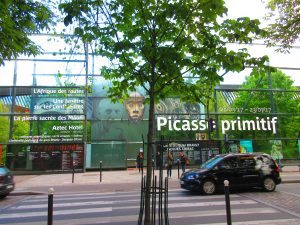
Quai Branly Museum façade. Photo by author.
At the MQB, what can be described as Pablo Picasso’s peccadillos were vaulted as examples of artistic genius and the result of his contact with African artifacts. As visitors walked through the exhibition, they could see Picasso’s art and writings, or reproductions thereof, juxtaposed with African masks, sculptures, and seminude postcard representations of Malinke and Sudanese women. The exhibition included objects Picasso collected, viewed in the Trocadero Ethnography Museum, and/or traded with fellow, mostly male, artists. Curatorial wall texts and a brochure in French and the occasional English explained how Picasso’s figural abstraction defined modern art.
Still, the exhibition could have used more clarification. I wondered why, especially in light of displays in other Parisian museums, the MQB thought visitors would find the Picasso-great-man and artist myth appropriate. The privileging of Picasso and his primitivism in an undefined modern art history was underexplained. Most of the nude bodies and, according to wall texts, the “disfigured” “monster” faces he created were predominantly of females with apparently unremarkable lives or histories beyond Picasso’s use. The suggestion that Picasso made tableaus of stylized penises in response to his exposure to African statues with erect phalluses did not seem to adequately explain his fascination with human sexuality.
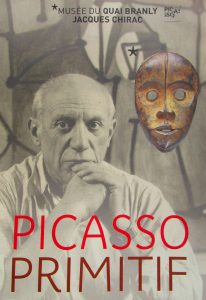
Picasso Primitive brochure cover detail. Photo by author.
Perhaps odder still was how the MQB left unpacked and decontextualized the notion of the primitive. The museum’s (and/or Picasso’s ?) definition all but ignored the history of this term and, as such, the discourse about it and the Other. In so doing, the show affirmed yet again an ethnocentric characterization of the MQB that James Clifford, among others, criticized the museum for entrenching after its 2006 opening. (See James Clifford, “Quai Branly in Process,” October, Spring 2007, 3–23.) The effects of refusing to detangle and define primitive were compounded by the relative lack of wall and brochure text explaining the history, circumstances of acquisition and display, and the socioreligious significances of most masks and statues shown or referenced in the exhibition. It was compounded by the MQB not sufficiently clarifying the sociopolitical and economic contexts in which Picasso traded images of unclothed Africans and created and sold art. In the 2010 Spectacular Art of Jean-Léon Gérôme exhibition at the J. Paul Getty Center in Brentwood, California (June 15–September 12, 2010), visitors learned that Gérôme’s prurient Orientalism was cultivated in relation to the contemporary European marketplace. The perhaps unintended impression that Primitive Picasso organizers hoped to titillate for monetary profit at the expense of the Other was accentuated by the absence of a similar analysis, if indeed the artworks on display were created for public, not private, consumption. Consumption was also underclarified.
More explanation was additionally necessary in the wall texts and brochures for Africa in the Capital. The largest section of the show was staged in the museum named after the king of Morocco, Mohammed VI. Here, visitors walked through rooms of paintings, sculpture, and photography that, according to one brochure, celebrated African creativity, African identity, African culture, the African art scene, and, in the case of at least one artist, humanity removed from racial identifiers. Exhibition materials informed us that the works of art were created by North and/or sub-Saharan Africans, including artists born and/or living off the continent. One example is the Moroccan-French photographer Leila Alaoui, who died shortly after a 2015 Burkina Faso terrorist attack while she was on assignment for Amnesty International. She was born in Paris and resided and worked in Europe, the United States, and Morocco. Alaoui, with her strong sense of injustice and interest in immigration, would probably note that the ability of some artists to easily move across borders is an elite privilege, an important distinction I could not find in exhibition materials. I could also see little discussion about the influences and significance of living and making art in diaspora cultures. The contradictions of an exhibition that was meant to celebrate diversity, yet included artists based upon ancestry alone, appeared lost on the organizers.
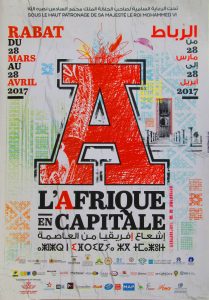
Africa in the Capital brochure cover. Photo by author.
Though the organizers intended Africa in the Capital City to celebrate African identity and creativity, the March 2017 opening and governmental support suggests an ulterior motive: to publicize Morocco’s reentry into the African Union (AU), made official in January 2017. The membership signifies a majority of AU member states’ acceptance of Morocco’s claims to the Western Sahara and its natural resources, a point of contention resulting in Morocco’s exit from a precursor to the AU and, over the decades, international condemnation of what former United Nations Secretary-General Ban Ki-moon called the Moroccan occupation. The controversy behind Morocco’s AU membership and actions in the Western Sahara was not part of the exhibition.
Also difficult to locate were critical artworks or narratives about contemporary Africa. One might conclude that there are no artworks that comment on accusations of corruption and cronyism, misuse of the environment, or violations of human rights, not to mention a lack of development; genocide; violence against women, the LGBT community, and minorities; and, of course, forced displacement and illegal immigration. The lacunae were all the more bizarre considering the inclusion of Alaoui, who depicted sub-Saharan immigrants in her 2014 Marrakesh Biennial submission Crossings and other artwork. As painfully indicated by the circumstances surrounding her demise and the deaths of African, European, and United States military and civilians, sticking one’s head in the proverbial sand cannot make problems disappear. Worse, the silence, like the silence at the MQB, arguably revictimizes her and others. The silence ignores the legacy of their work and sacrifice while leaving a door open to future transgressions. It is frankly unbefitting Morocco’s role and influence as an AU member in an exposition at a museum named after Morocco’s monarch and an exposition in 2017.
Again, I wonder if the MMVI and the MQB failed patrons, benefactors, and themselves. Perhaps we can ask the four vendors across the busy highway in front of the MQB on the day I visited. Of African descent, they were placing their wares for sale—miniature reproductions of the Eiffel Tower and similar iconic trinkets—on corded ground cloths used to collect items quickly should the police arrive to chase them away.
News from the Art and Academic Worlds
posted by CAA — November 15, 2017
Each week CAA News summarizes articles, published around the web, that CAA members may find interesting and useful in their professional and creative lives.
Wu Hung Honored for Helping Create Field of Contemporary Chinese Art History
Meet Wu Hung, one of the creators of the field of contemporary Chinese art history, and the 2018 CAA distinguished scholar. (UChicago News)
Researchers Discover an Ancient Stone Carving So Detailed It Could Alter the Course of Art History
The tiny carving has been dubbed the Pylos Combat Agate. (Artnet News)
Leonardo da Vinci Painting Could Become Most Expensive Work Ever Auctioned—Here’s What You Need to Know
Salvator Mundi has been celebrated as the “greatest artistic rediscovery of the 21st century” by Christie’s. (Artsy)
Berlin Nationalgalerie Prize Nominees Troubled by Focus on Gender and Nationality
The shortlisted artists have expressed concern at the lack of engagement with their work. (The Art Newspaper)
Thousands of Objects Tell of Sex, Drugs, and Transcendence Across the Centuries
A new exhibition at Harvard’s Houghton Library explores the human desire to escape the ordinary. (Hyperallergic)
How Art Is Helping Veterans Overcome PTSD
A recent survey ranked art therapy among the top five most helpful techniques used to treat veterans. (Artsy)
Finalists for the 2018 Morey and Barr Awards
posted by CAA — November 14, 2017
CAA is pleased to announce the 2018 finalists for the Charles Rufus Morey Book Award and two Alfred H. Barr Jr. Awards. The winners of the three prizes, along with the recipients of other Awards for Distinction, will be announced in January 2018 and presented during Convocation in conjunction with CAA’s 106th Annual Conference, taking place in Los Angeles, February 21-24, 2018.
Charles Rufus Morey Book Award
The Charles Rufus Morey Book Award honors an especially distinguished book in the history of art, published in any language between September 1, 2016, and August 31, 2017. The four finalists for 2018 are:
Benjamin Anderson, Cosmos and Community in Early Medieval Art (New Haven: Yale University Press, 2017)
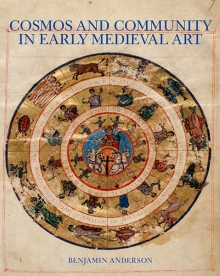
Susanna Berger, The Art of Philosophy: Visual Thinking in Europe from the Late Renaissance to the Early Enlightenment (Princeton: Princeton University Press, 2017)
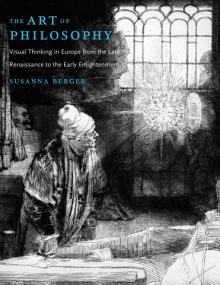
Laura Anne Kalba, Color in the Age of Impressionism: Commerce, Technology, and Art (University Park: Pennsylvania State University Press, 2017)
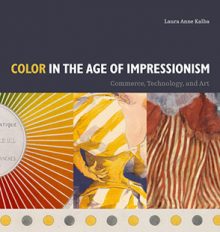
Dorothy Ko, The Social Life of Inkstones: Artisans and Scholars in Early Qing China (Seattle: University of Washington Press, 2017)
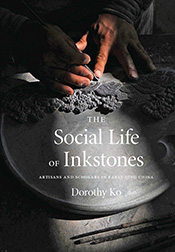
Alfred H. Barr Jr. Award
The Alfred H. Barr Jr. Award for museum scholarship is presented to the author(s) of an especially distinguished catalogue in the history of art, published between September 1, 2016, and August 31, 2017, under the auspices of a museum, library, or collection. The five finalists for 2018 are:
Matthew Affron, Paint the Revolution: Mexican Modernism, 1910-1950 (New Haven: Yale University Press, 2016)
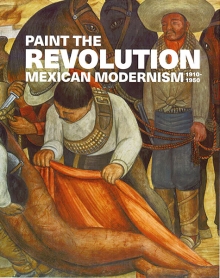
Wanda M. Corn, Georgia O’Keeffe: Living Modern (Brooklyn: Brooklyn Museum, 2017)
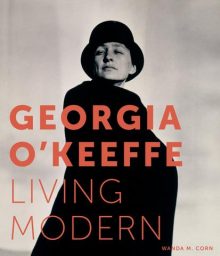
Robert Cozzolino, Anne Classen Knutson, and David M. Lubin, eds., World War I and American Art (Princeton: Princeton University Press, 2016)
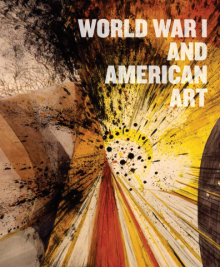
Barbara Drake Boehm and Melanie Holcomb, eds., Jerusalem, 1000-1400: Every People Under Heaven (New York: Metropolitan Museum of Art, 2016)
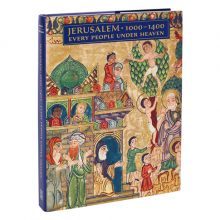
Pilar Silva Maroto, Bosch: The Fifth Centenary Exhibition (New York: Thames & Hudson, 2016)
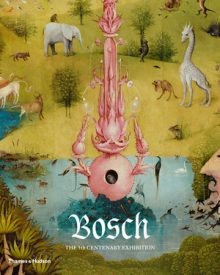
Alfred H. Barr Jr. Award for Smaller Museums, Libraries, Collections, and Exhibitions
In 2009, CAA established a second Barr award for the author(s) of catalogues produced by smaller museums, libraries, and collections with an annual operating budget of less than $10 million. The finalists for the second Barr award for 2018 are:
Melissa Rachleff, Inventing Downtown: Artist-Run Galleries in New York City, 1952-1965 (New York: Grey Art Gallery, New York University, 2017)
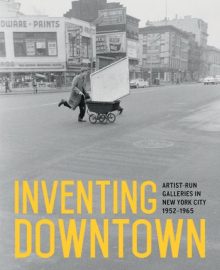
Jane Ashton Sharp, Thinking Pictures: The Visual Field of Moscow Conceptualism (New Brunswick, NJ: Zimmerli Art Museum, Rutgers, 2016)
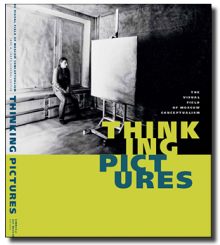
Kevin Sharp, ed., Wild Spaces, Open Seasons: Hunting and Fishing in American Art (Norman, OK: University of Oklahoma Press, 2016)
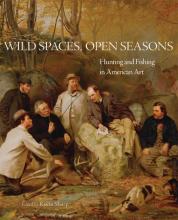
The presentation of the 2018 Awards for Distinction will take place on Wednesday evening, February 21, 6:00–7:30 PM, at the LA Convention Center in Los Angeles. The event is free and open to the public. For more information about CAA’s Awards for Distinction, please contact Aakash Suchak, CAA grants and special programs manager at 212-392-4435.
Meet the 2018 Participants in the CAA-Getty International Program
posted by CAA — November 14, 2017
CAA is pleased to announce this year’s participants in the CAA-Getty International Program. Now in its seventh year, the international program will bring fifteen new participants and five alumni to the 2018 Annual Conference in Los Angeles, February 21-24. The participants—professors of art history, curators, and artists who teach art history—hail from countries throughout the world, expanding CAA’s growing international membership and contributing to an increasingly diverse community of scholars and ideas. Selected by a jury of CAA members from a highly competitive group of applicants, the grant recipients will receive funding for travel expenses, hotel accommodations, conference registration, CAA membership, and per diems for out-of-pocket expenditures.
At a one-day preconference colloquium, to be held this year at the Getty Center, the fifteen new participants will discuss key issues in the international study of art history together with five CAA-Getty alumni and several CAA members from the United States, who also serve as hosts throughout the conference. The preconference program will delve deeper into subjects discussed during the past year’s CAA-Getty reunion, held at the 2017 Annual Conference, in which twenty alumni presented a series of conference sessions titled “Global Conversations.” Topics include such issues as postcolonial and Eurocentric legacies, interdisciplinary and transnational methodologies, and global trends in museum research and exhibitions.
The inclusion of five alumni is an added feature of this year’s CAA-Getty program. They will provide intellectual links between previous convenings of the international group and this year’s program and also serve as ombudsmen between CAA and the growing community of CAA-Getty alumni. In addition to contributing to the preconference colloquium, the five participating alumni will present a new Global Conversation during the 2018 conference titled Border Crossings: The Migration of Art, People, and Ideas.
The goal of the CAA-Getty International Program is to increase international participation in the organization’s activities, thereby expanding international networks and the exchange of ideas both during and after the conference. CAA currently includes members from 70 countries around the world. The CAA-Getty International Program is made possible with a generous grant from The Getty Foundation.
2018 Participants in the CAA-Getty International Program
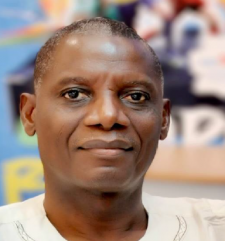 John Tokpabere Agberia is an artist, art historian, and curator. Graduating in 1983 from the University of Benin, Benin City, he began his academic career as a graduate assistant at the University of Uyo in 1985. He received an MA in art history at University of Ibadan in 1988 and a PhD from the University of Port Harcourt in 1998. Agberia has received several distinguished fellowships from the United Kingdom, including the AG Leventis fellowship at School of Oriental and African Studies (SOAS), University of London (1995), the Sainsbury Research fellowship of Sainsbury Research Unit at the University of East Anglia (1997), and the University of Oxford’s Titular fellowship at the Pitt Rivers Museum (2009). At Oxford Pitt Rivers, he worked with Jeremy Coote, the Joint Head of Collections where he began studying museums, cultural heritage, and curating. He has since become an active curator in Nigeria. Agberia is a professor of fine arts and design at the University of Port Harcourt, Nigeria.
John Tokpabere Agberia is an artist, art historian, and curator. Graduating in 1983 from the University of Benin, Benin City, he began his academic career as a graduate assistant at the University of Uyo in 1985. He received an MA in art history at University of Ibadan in 1988 and a PhD from the University of Port Harcourt in 1998. Agberia has received several distinguished fellowships from the United Kingdom, including the AG Leventis fellowship at School of Oriental and African Studies (SOAS), University of London (1995), the Sainsbury Research fellowship of Sainsbury Research Unit at the University of East Anglia (1997), and the University of Oxford’s Titular fellowship at the Pitt Rivers Museum (2009). At Oxford Pitt Rivers, he worked with Jeremy Coote, the Joint Head of Collections where he began studying museums, cultural heritage, and curating. He has since become an active curator in Nigeria. Agberia is a professor of fine arts and design at the University of Port Harcourt, Nigeria.
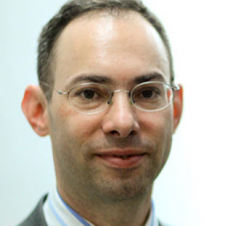 Felipe Soeiro Chaimovich was born in Santiago, Chile, and lives in São Paulo, Brazil. He earned a PhD in philosophy from the University of São Paulo and is a professor of art history, aesthetics, and art criticism at the Arts Faculty of Fundação Armando Álvares Penteado as well as the chief curator of the Museum of Modern Art, both located in São Paulo. He has three areas of academic research: mirrors as the origin of contemporary art, the confusion between gardens and nature in the ecological debate, and the aesthetics of taste and table manners. He has curated Sao Paolo’s International Garden Festival at Ibirapuera Park (2010) and Encounters of Art and Gastronomy at the city’s Museum of Modern Art (2012). Chaimovich is currently finishing a book on the origins of contemporary art that explores optics and the invention of perspective, Versailles, the relationship between mirrors and paintings, and the emergence of a new, self-reflexive working process in early 20th century art.
Felipe Soeiro Chaimovich was born in Santiago, Chile, and lives in São Paulo, Brazil. He earned a PhD in philosophy from the University of São Paulo and is a professor of art history, aesthetics, and art criticism at the Arts Faculty of Fundação Armando Álvares Penteado as well as the chief curator of the Museum of Modern Art, both located in São Paulo. He has three areas of academic research: mirrors as the origin of contemporary art, the confusion between gardens and nature in the ecological debate, and the aesthetics of taste and table manners. He has curated Sao Paolo’s International Garden Festival at Ibirapuera Park (2010) and Encounters of Art and Gastronomy at the city’s Museum of Modern Art (2012). Chaimovich is currently finishing a book on the origins of contemporary art that explores optics and the invention of perspective, Versailles, the relationship between mirrors and paintings, and the emergence of a new, self-reflexive working process in early 20th century art.
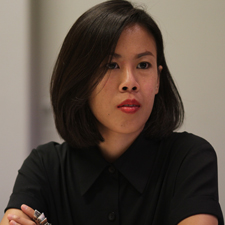 Thanavi Chotpradit is a lecturer in modern and contemporary Thai art history in the Department of Art History, Faculty of Archaeology, at Silpakorn University, Bangkok, Thailand. She is also a member of the editorial collective of Southeast of Now: Directions in Contemporary and Modern Art, a peer-reviewed journal dedicated to study of contemporary and modern art in Southeast Asia. She received her PhD in art history from Birkbeck, University of London, under a Royal Thai Government Scholarship. In 2015-16, Chotpradit participated in a cross-regional research program, “Ambitious Alignment: New Histories of Southeast Asian Art,” developed by the Power Institute Foundation for Art and Visual Culture, University of Sydney, Australia, and funded by the Getty Foundation’s Connecting Art Histories initiative. Her areas of interest include modern and Thai contemporary art in relation to memory studies, war commemoration, and Thai politics.
Thanavi Chotpradit is a lecturer in modern and contemporary Thai art history in the Department of Art History, Faculty of Archaeology, at Silpakorn University, Bangkok, Thailand. She is also a member of the editorial collective of Southeast of Now: Directions in Contemporary and Modern Art, a peer-reviewed journal dedicated to study of contemporary and modern art in Southeast Asia. She received her PhD in art history from Birkbeck, University of London, under a Royal Thai Government Scholarship. In 2015-16, Chotpradit participated in a cross-regional research program, “Ambitious Alignment: New Histories of Southeast Asian Art,” developed by the Power Institute Foundation for Art and Visual Culture, University of Sydney, Australia, and funded by the Getty Foundation’s Connecting Art Histories initiative. Her areas of interest include modern and Thai contemporary art in relation to memory studies, war commemoration, and Thai politics.
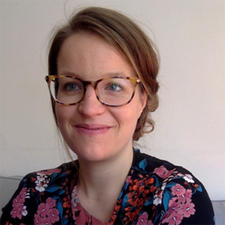 Katarzyna Cytlak is a Polish art historian based in Buenos Aires, Argentina, whose research focuses on the artistic creation of Central Europe in the second half of the twentieth century. As seen through a transmodern and transnational perspective, she studies conceptual art, radical and utopian architecture, socially engaged art, and art theory in relation to post-socialist countries. In 2012 she received a PhD from the University Paris 1 Panthéon-Sorbonne with a dissertation titled “The Grey Utopias: Architectural Projects in Central Europe in the 1970s.” Selected publications include articles in Umění/Art, Eadem Utraque Europa, Telón de Fondo, Third Text, and the RIHA Journal. Cytlak is currently a postdoctoral fellow at the Consejo Nacional de Investigaciones Científicas y Técnicas, Argentina (CONICET) and at the University of San Martín, Argentina. Her areas of research include East European and Latin American conceptual art, decolonial theory, and art history and criticism in post-communist countries.
Katarzyna Cytlak is a Polish art historian based in Buenos Aires, Argentina, whose research focuses on the artistic creation of Central Europe in the second half of the twentieth century. As seen through a transmodern and transnational perspective, she studies conceptual art, radical and utopian architecture, socially engaged art, and art theory in relation to post-socialist countries. In 2012 she received a PhD from the University Paris 1 Panthéon-Sorbonne with a dissertation titled “The Grey Utopias: Architectural Projects in Central Europe in the 1970s.” Selected publications include articles in Umění/Art, Eadem Utraque Europa, Telón de Fondo, Third Text, and the RIHA Journal. Cytlak is currently a postdoctoral fellow at the Consejo Nacional de Investigaciones Científicas y Técnicas, Argentina (CONICET) and at the University of San Martín, Argentina. Her areas of research include East European and Latin American conceptual art, decolonial theory, and art history and criticism in post-communist countries.
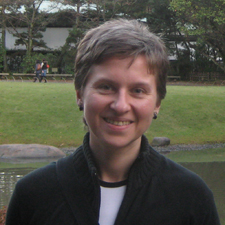 Anna Guseva is an associate professor in the School of History, Faculty of Humanities, National Research University Higher School of Economics (Moscow), where she has been a faculty member since 2014. She also directs a master’s program, “History of Art Culture and the Art Markets,” in the same department. Her research interests span both art and urban history in Russia and Asia in relation to food and rural history. Guseva graduated from the Lomonosov Moscow State University with a degree in art history in 1998 and received her PhD in architecture from the University of Tokyo in the Fujimori-Muramatsu Lab in 2011. She has organized architectural exhibitions as an independent curator, including My Melnikov (2013) and Environmentally Friendly Japanese Architecture: Taira Nishizawa Architects (2013), both at the Moscow Architectural Institute, and the latter also at the House of Architects in Nizniy Novgorod. Guseva also writes reviews for professional journals and trade publications on architecture and Asian art.
Anna Guseva is an associate professor in the School of History, Faculty of Humanities, National Research University Higher School of Economics (Moscow), where she has been a faculty member since 2014. She also directs a master’s program, “History of Art Culture and the Art Markets,” in the same department. Her research interests span both art and urban history in Russia and Asia in relation to food and rural history. Guseva graduated from the Lomonosov Moscow State University with a degree in art history in 1998 and received her PhD in architecture from the University of Tokyo in the Fujimori-Muramatsu Lab in 2011. She has organized architectural exhibitions as an independent curator, including My Melnikov (2013) and Environmentally Friendly Japanese Architecture: Taira Nishizawa Architects (2013), both at the Moscow Architectural Institute, and the latter also at the House of Architects in Nizniy Novgorod. Guseva also writes reviews for professional journals and trade publications on architecture and Asian art.
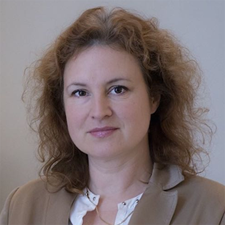 Markéta Hánová received a PhD in 2008 from Charles University in Prague, Czech Republic. Since 2000 she has been the curator of Japanese art at Prague’s National Gallery (NG). In 2012 she became the director of the Collection of Asian and African Art at the same institution. Hánová’s fields of interest include Japanese painting, ukiyo-e prints and Japonisme. She organized the exhibition Japonisme in Czech Art at the NG in 2014, one of many she has curated for the museum. In collaboration with the Japanese museums of art in Wakayama and Chiba she is currently developing an exhibition titled Japonisme in the Czech Lands to be presented in Japan in 2019. Her current research focuses on the popularity of collecting Japanese woodblock prints in the Czech lands in the late nineteen and early twentieth centuries. She has also reconceived the installation of Asian art at the NG Prague.
Markéta Hánová received a PhD in 2008 from Charles University in Prague, Czech Republic. Since 2000 she has been the curator of Japanese art at Prague’s National Gallery (NG). In 2012 she became the director of the Collection of Asian and African Art at the same institution. Hánová’s fields of interest include Japanese painting, ukiyo-e prints and Japonisme. She organized the exhibition Japonisme in Czech Art at the NG in 2014, one of many she has curated for the museum. In collaboration with the Japanese museums of art in Wakayama and Chiba she is currently developing an exhibition titled Japonisme in the Czech Lands to be presented in Japan in 2019. Her current research focuses on the popularity of collecting Japanese woodblock prints in the Czech lands in the late nineteen and early twentieth centuries. She has also reconceived the installation of Asian art at the NG Prague.
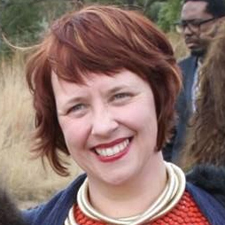 Alison Kearney is a Johannesburg-based artist and scholar of South African art, who lectures on art education in the School of Education at the University of the Witwatersrand (Wits). She obtained her PhD, titled “Beyond the Readymade: Found Objects in Contemporary South African art,” from Wits in 2016. She completed her master’s degree in fine art (with distinction) from the same university in 2004. Through her research Kearney interrogates the continuities and ruptures between African and Western art practices by critically exploring the ways in which Western avant-garde art practices and their attendant theories have informed contemporary African art. Kearney’s artworks have been featured in numerous exhibitions in South Africa, Switzerland and Australia. She has published scholarly work on contemporary South African art and develops education materials that facilitate particular engagements with art for the Wits Art Museum.
Alison Kearney is a Johannesburg-based artist and scholar of South African art, who lectures on art education in the School of Education at the University of the Witwatersrand (Wits). She obtained her PhD, titled “Beyond the Readymade: Found Objects in Contemporary South African art,” from Wits in 2016. She completed her master’s degree in fine art (with distinction) from the same university in 2004. Through her research Kearney interrogates the continuities and ruptures between African and Western art practices by critically exploring the ways in which Western avant-garde art practices and their attendant theories have informed contemporary African art. Kearney’s artworks have been featured in numerous exhibitions in South Africa, Switzerland and Australia. She has published scholarly work on contemporary South African art and develops education materials that facilitate particular engagements with art for the Wits Art Museum.
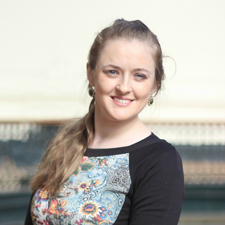 Natalia Keller is a graduate of Warsaw University (BA, 2010) and Utrecht University (MA, 2013), and a museum professional in a variety of cultural institutions in Europe and South America. Since 2014 she has been a researcher in the Collection Department of the National Museum of Fine Arts in Santiago de Chile where she studies its foreign works of art and their place within a Latin American context. Her research interests include prints and drawings, gender studies, and women artists. Keller has directed and participated in research and exhibition projects about female devotion in the Late Middle Ages, women’s involvement in the Academy during the 19th century, and contemporary Chilean women artists. She is especially interested in presenting art through the perspective of gender studies and visual and material culture, as well as through themes of community engagement and social justice.
Natalia Keller is a graduate of Warsaw University (BA, 2010) and Utrecht University (MA, 2013), and a museum professional in a variety of cultural institutions in Europe and South America. Since 2014 she has been a researcher in the Collection Department of the National Museum of Fine Arts in Santiago de Chile where she studies its foreign works of art and their place within a Latin American context. Her research interests include prints and drawings, gender studies, and women artists. Keller has directed and participated in research and exhibition projects about female devotion in the Late Middle Ages, women’s involvement in the Academy during the 19th century, and contemporary Chilean women artists. She is especially interested in presenting art through the perspective of gender studies and visual and material culture, as well as through themes of community engagement and social justice.
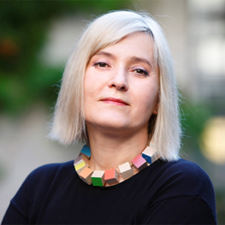 Sandra Križić Roban received a PhD from the Department of Art History, Faculty of Philosophy, at the University of Zagreb, Croatia. Active as a critic, curator, lecturer, and writer, Križić Roban is a senior research advisor at the Institute of Art History in Zagreb, where she also serves as editor-in-chief of the art journal Život umjetnosti. Together with colleagues she established the Office for Photography in 2013, a nonprofit association dedicated to researching and promoting contemporary photography. She is the author of the only two comprehensive studies of contemporary photography and painting in Croatia: At Second Glance: the Position of Contemporary Croatian Photography (2010), and Croatian Painting from 1945 to Today (2013). Within the project Postmedia and Non-institutional Art Practices from the 1960s she has organized three international conferences on contemporary arts. Križić Roban’s main research topics include contemporary art, history and theory of photography, post-war architecture, public space discourse, and contemporary war memorials.
Sandra Križić Roban received a PhD from the Department of Art History, Faculty of Philosophy, at the University of Zagreb, Croatia. Active as a critic, curator, lecturer, and writer, Križić Roban is a senior research advisor at the Institute of Art History in Zagreb, where she also serves as editor-in-chief of the art journal Život umjetnosti. Together with colleagues she established the Office for Photography in 2013, a nonprofit association dedicated to researching and promoting contemporary photography. She is the author of the only two comprehensive studies of contemporary photography and painting in Croatia: At Second Glance: the Position of Contemporary Croatian Photography (2010), and Croatian Painting from 1945 to Today (2013). Within the project Postmedia and Non-institutional Art Practices from the 1960s she has organized three international conferences on contemporary arts. Križić Roban’s main research topics include contemporary art, history and theory of photography, post-war architecture, public space discourse, and contemporary war memorials.
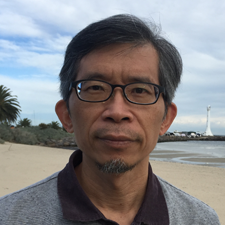
Hsin-tien Liao holds PhDs in art history (University of Central England in Birmingham, UK) and sociology (National Taiwan University, Taipei, Taiwan). He is the dean of the College of Humanities at the National Taiwan University of Arts and also teaches at the school’s Graduate School of Art Management and Culture Policy. From 2010-13 he was a senior lecturer at Australian National University where he is now an honorary professor. Liao’s research focuses on calligraphy, Taiwanese art, the sociology of art, and postcolonial visual art. Recent publications include The Tension of Art: Taiwanese Fine Art and the Politics of Culture (2010), Extending Knowledge through Investigating Art (2013), and A New Thinking on Taiwanese Art: Framework, Criticism, and Aesthetics (2017). He has written biographies about two modern Taiwanese printmakers: Liao Shiou-ping (2016) and Li Xi-chi (2017). In 2013 he published a Chinese translation of Kenneth Clark’s Landscape into Art. In 2016, he established the Taiwanese Art History Association and became its first chair.
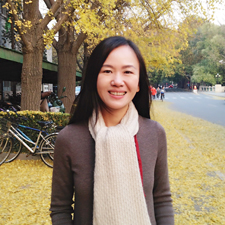 Chen Liu teaches art history and architecture at Tsinghua University in Beijing, China, where she received a bachelor’s degree in architecture with honors. After receiving a master’s in architecture and urban planning from the University of Maryland in 2000, she practiced as an architect in Washington DC until 2005. In 2011, she received a PhD in art history from Princeton University, specializing in Renaissance and Baroque art and architecture. In 2012, funded by an Andrew W. Mellow Fellowship, she helped create and direct the first Villa I Tatti summer research seminar designed specifically for Chinese scholars. “The Unity of the Arts in Renaissance Italy” provided participants with the opportunity to study firsthand the art and architecture of Renaissance Italy. Liu also teaches courses on the visual arts at Beijing Film Academy and Tongji University (Shanghai). She publishes widely on early modern art and architecture, as well as on the response of Chinese scholars to the Italian Renaissance.
Chen Liu teaches art history and architecture at Tsinghua University in Beijing, China, where she received a bachelor’s degree in architecture with honors. After receiving a master’s in architecture and urban planning from the University of Maryland in 2000, she practiced as an architect in Washington DC until 2005. In 2011, she received a PhD in art history from Princeton University, specializing in Renaissance and Baroque art and architecture. In 2012, funded by an Andrew W. Mellow Fellowship, she helped create and direct the first Villa I Tatti summer research seminar designed specifically for Chinese scholars. “The Unity of the Arts in Renaissance Italy” provided participants with the opportunity to study firsthand the art and architecture of Renaissance Italy. Liu also teaches courses on the visual arts at Beijing Film Academy and Tongji University (Shanghai). She publishes widely on early modern art and architecture, as well as on the response of Chinese scholars to the Italian Renaissance.
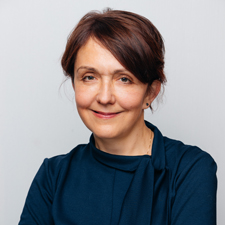 Natalia Moussienko is a leading research fellow at the Modern Art Research Institute of the National Academy of Arts of Ukraine (Kyiv). She is the author of numerous books and articles on art history, cultural diplomacy, cinema, and urbanism, including Art of Maidan (2016), Kyiv Art Space (2013), and Arts and Politics (2002). In 2016 the National Academy of Arts of Ukraine awarded Moussienko a Golden Medal for her achievements in cultural diplomacy. She was also awarded a Fulbright scholarship to conduct research at the Kennan Institute, Wilson Center, in Washington DC (2011-2012) and a Thesaurus Polonia fellowship to study at the International Cultural Center in Krakow (2017). Moussienko is an initiator and curator of the Art of Maidan, a continuing project begun in 2014 to document the explosion of artistic creativity during the Revolution of Dignity in 2013-14. Central to the project is a book and exhibition that has already been presented in sixteen locations in Ukraine, the United States, and Europe.
Natalia Moussienko is a leading research fellow at the Modern Art Research Institute of the National Academy of Arts of Ukraine (Kyiv). She is the author of numerous books and articles on art history, cultural diplomacy, cinema, and urbanism, including Art of Maidan (2016), Kyiv Art Space (2013), and Arts and Politics (2002). In 2016 the National Academy of Arts of Ukraine awarded Moussienko a Golden Medal for her achievements in cultural diplomacy. She was also awarded a Fulbright scholarship to conduct research at the Kennan Institute, Wilson Center, in Washington DC (2011-2012) and a Thesaurus Polonia fellowship to study at the International Cultural Center in Krakow (2017). Moussienko is an initiator and curator of the Art of Maidan, a continuing project begun in 2014 to document the explosion of artistic creativity during the Revolution of Dignity in 2013-14. Central to the project is a book and exhibition that has already been presented in sixteen locations in Ukraine, the United States, and Europe.
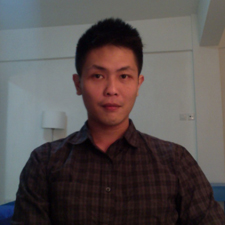 Simon Soon is a researcher and senior lecturer in the Visual Art Department of the Cultural Centre, University of Malaya, located in Kuala Lumpur, Malaysia. He completed a PhD in art history at the University of Sydney with a dissertation titled, “What is Left of Art? The Spatio-Visual Practice of Political Art in Indonesia, Singapore, Thailand, and the Philippines, 1950s–1970s.” Soon studies comparative modernities in art, urban histories, and art historiography and writes on various topics related to twentieth-century art across Asia. He is also a co-editor of Narratives of Malaysian Art, Vol. 4. He is the Penang field director for the Power Institute, University of Sydney’s “Site and Space of Southeast Asia,” funded by Getty Foundation’s Connecting Art Histories Initiative. He is also an editorial member of Southeast of Now: Directions in Contemporary and Modern Art, a peer-review journal published by NUS Press (National University of Singapore) and a team member of Malaysia Design Archive.
Simon Soon is a researcher and senior lecturer in the Visual Art Department of the Cultural Centre, University of Malaya, located in Kuala Lumpur, Malaysia. He completed a PhD in art history at the University of Sydney with a dissertation titled, “What is Left of Art? The Spatio-Visual Practice of Political Art in Indonesia, Singapore, Thailand, and the Philippines, 1950s–1970s.” Soon studies comparative modernities in art, urban histories, and art historiography and writes on various topics related to twentieth-century art across Asia. He is also a co-editor of Narratives of Malaysian Art, Vol. 4. He is the Penang field director for the Power Institute, University of Sydney’s “Site and Space of Southeast Asia,” funded by Getty Foundation’s Connecting Art Histories Initiative. He is also an editorial member of Southeast of Now: Directions in Contemporary and Modern Art, a peer-review journal published by NUS Press (National University of Singapore) and a team member of Malaysia Design Archive.
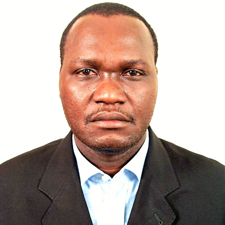 Romuald Tchibozo is an art historian from Benin. He received his PhD in 2003 from the Humboldt University of Berlin with a dissertation titled “Art and Arbitrary: a Study of the African Contemporary Art Reception in the West: the German Case from 1950 to the Present Day.” Currently, he is a senior lecturer of art history in the Archaeology and History Department, Faculty of Arts and Humanities, National Institute of Art, Archaeology and Cultural Craft, at the University of Abomey-Calavi, Benin. He also teaches art history at the Centre Régional d’Action Culturelle of Lomé in Togo. In 2013-14, Tchibozo was a fellow in the Art Histories and Aesthetic Practices program, an initiative of the Max-Planck-Institute at the Forum for Transregional Studies in Berlin. His research focuses on African contemporary art in the former German Democratic Republic, the evolution of contemporary art in Benin, and heritage issues, such as the Yoruba Gèlèdè Society and the practice of art history.
Romuald Tchibozo is an art historian from Benin. He received his PhD in 2003 from the Humboldt University of Berlin with a dissertation titled “Art and Arbitrary: a Study of the African Contemporary Art Reception in the West: the German Case from 1950 to the Present Day.” Currently, he is a senior lecturer of art history in the Archaeology and History Department, Faculty of Arts and Humanities, National Institute of Art, Archaeology and Cultural Craft, at the University of Abomey-Calavi, Benin. He also teaches art history at the Centre Régional d’Action Culturelle of Lomé in Togo. In 2013-14, Tchibozo was a fellow in the Art Histories and Aesthetic Practices program, an initiative of the Max-Planck-Institute at the Forum for Transregional Studies in Berlin. His research focuses on African contemporary art in the former German Democratic Republic, the evolution of contemporary art in Benin, and heritage issues, such as the Yoruba Gèlèdè Society and the practice of art history.
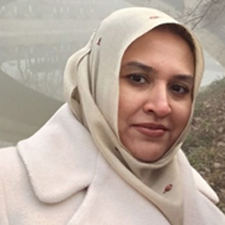 Sarah Umer is an assistant professor in the Institute of Visual Arts & Design at Lahore College for Women, the largest women’s university in Pakistan and one of the largest in South Asia. In addition to teaching undergraduate and graduate students, Umer organizes seminars and conferences with universities and museums on a national and international level. Her research interests include the study of ancient civilizations and religions, predominantly in the South Asian region. In 2016, Umer received a PhD from Lahore College for Women with a dissertation on the religious beliefs of the Indus Valley people. In early 2017, as a recipient of a Charles Wallace Fellowship, she probed this topic further at SOAS (School of Oriental and African Studies), University of London. In particular, she studied the cuneiform tablets of Mesopotamia to see if this civilization may have shared religious beliefs with the Indus Valley culture, in addition to their known trading connections.
Sarah Umer is an assistant professor in the Institute of Visual Arts & Design at Lahore College for Women, the largest women’s university in Pakistan and one of the largest in South Asia. In addition to teaching undergraduate and graduate students, Umer organizes seminars and conferences with universities and museums on a national and international level. Her research interests include the study of ancient civilizations and religions, predominantly in the South Asian region. In 2016, Umer received a PhD from Lahore College for Women with a dissertation on the religious beliefs of the Indus Valley people. In early 2017, as a recipient of a Charles Wallace Fellowship, she probed this topic further at SOAS (School of Oriental and African Studies), University of London. In particular, she studied the cuneiform tablets of Mesopotamia to see if this civilization may have shared religious beliefs with the Indus Valley culture, in addition to their known trading connections.
Participating Alumni
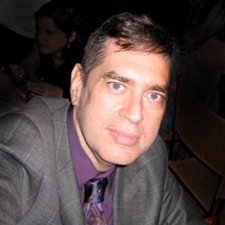 Cezar Bartholomeu is an artist and professor of art history at the School of Fine Arts, Universidade Federal do Rio de Janeiro (UFRJ), in Brazil. He received a PhD in visual languages from both the UFRJ and the École de Hautes Études in Paris. Between 2010-17 he was the editor-in-chief of Arte & Ensaios, one of Brazil’s major art journals. His areas of research include photography as art, photography’s history and theory, and photography in Brazil. As an artist, Bartholomeu exhibits widely in Brazil and Europe. His publications include Celebrações/Negociações – Fotografia Africana na coleção Gilberto Chateaubriand (African Photography in the Gilberto Chateaubriand Collection, Museum of Modern Art, Rio de Janeiro, 2011), “Emanation/Abjection” in Laboratório Público de Históra da Arte Mundial (Public World Art History Lab, Rio de Janeiro: UERJ, 2014), and “Thirty Times Failed: Valério Vieira and Experimental Photography in Brazil” in Photography and Failure (New York: Bloomsbury, 2017).
Cezar Bartholomeu is an artist and professor of art history at the School of Fine Arts, Universidade Federal do Rio de Janeiro (UFRJ), in Brazil. He received a PhD in visual languages from both the UFRJ and the École de Hautes Études in Paris. Between 2010-17 he was the editor-in-chief of Arte & Ensaios, one of Brazil’s major art journals. His areas of research include photography as art, photography’s history and theory, and photography in Brazil. As an artist, Bartholomeu exhibits widely in Brazil and Europe. His publications include Celebrações/Negociações – Fotografia Africana na coleção Gilberto Chateaubriand (African Photography in the Gilberto Chateaubriand Collection, Museum of Modern Art, Rio de Janeiro, 2011), “Emanation/Abjection” in Laboratório Público de Históra da Arte Mundial (Public World Art History Lab, Rio de Janeiro: UERJ, 2014), and “Thirty Times Failed: Valério Vieira and Experimental Photography in Brazil” in Photography and Failure (New York: Bloomsbury, 2017).
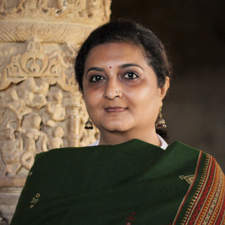 Parul Pandya Dhar is an associate professor of South and Southeast Asian art history in the Department of History, University of Delhi, where she researches and teaches premodern Indian art history and connected histories of Asian art. She has authored The Toraṇa in Indian and Southeast Asian Architecture (2010), edited Indian Art History: Changing Perspectives (2011), and co-edited Temple Architecture and Imagery of South and Southeast Asia (2016), Asian Encounters: Exploring Connected Histories (2014), and Cultural Interface of India with Asia: Religion, Art and Architecture (2004). Dhar has served as a jury member, peer reviewer, and editorial board member for numerous international conferences, publications, and journals. She was awarded the Nehru Trust Travel Grant, UK, in 2004, the Alexander von Humboldt Post-Doctoral Research Fellowship, Berlin, in 2007-08, and the CAA-Getty International Program award in 2012. She is a participating alumna of the CAA-Getty program in 2018. Dhar is also a well-known Bharatanatyam artist.
Parul Pandya Dhar is an associate professor of South and Southeast Asian art history in the Department of History, University of Delhi, where she researches and teaches premodern Indian art history and connected histories of Asian art. She has authored The Toraṇa in Indian and Southeast Asian Architecture (2010), edited Indian Art History: Changing Perspectives (2011), and co-edited Temple Architecture and Imagery of South and Southeast Asia (2016), Asian Encounters: Exploring Connected Histories (2014), and Cultural Interface of India with Asia: Religion, Art and Architecture (2004). Dhar has served as a jury member, peer reviewer, and editorial board member for numerous international conferences, publications, and journals. She was awarded the Nehru Trust Travel Grant, UK, in 2004, the Alexander von Humboldt Post-Doctoral Research Fellowship, Berlin, in 2007-08, and the CAA-Getty International Program award in 2012. She is a participating alumna of the CAA-Getty program in 2018. Dhar is also a well-known Bharatanatyam artist.
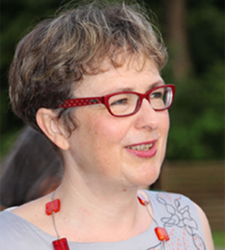 Ildikó Gericsné Fehér received an MA and PhD in art history from Eötvös Loránd University in Budapest, Hungary. As associate professor in the Department of Art History of the Hungarian University of Fine Arts in Budapest, she lectures and leads seminars on Renaissance and Baroque art. She is also a consultant to the university’s Conservation Department. Fehér’s research interests include detached wall paintings from medieval and Renaissance Italy in the collection of the Museum of Fine Arts Budapest; Florentine art dealers at the end of the nineteenth century; Károly Pulszky’s purchases of paintings in Italy for the museum circa 1890; wall paintings in Umbria from the fourteenth to sixteenth century; self-portraits by Hungarian artists in the Uffizi Gallery; and the works of Jacopo Palma il Giovane.
Ildikó Gericsné Fehér received an MA and PhD in art history from Eötvös Loránd University in Budapest, Hungary. As associate professor in the Department of Art History of the Hungarian University of Fine Arts in Budapest, she lectures and leads seminars on Renaissance and Baroque art. She is also a consultant to the university’s Conservation Department. Fehér’s research interests include detached wall paintings from medieval and Renaissance Italy in the collection of the Museum of Fine Arts Budapest; Florentine art dealers at the end of the nineteenth century; Károly Pulszky’s purchases of paintings in Italy for the museum circa 1890; wall paintings in Umbria from the fourteenth to sixteenth century; self-portraits by Hungarian artists in the Uffizi Gallery; and the works of Jacopo Palma il Giovane.
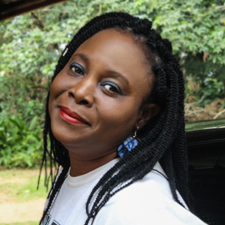 Peju Layiwola is an artist and professor of art history, Department of Creative Arts, University of Lagos, Nigeria. Through her writing and multimedia works Layiwola has addressed the tragic impact of the British Expedition to Benin, Nigeria, in 1897. Her focus on memory, Benin art and culture, and female participation in the visual arts in Nigeria has led to several articles in edited volumes such as Benin Kings and Rituals: Court Arts from Nigeria (2007), Writing African Women: Gender, Popular Culture and Literature in West Africa (1997) and N.Paradoxa, an international feminist journal (2013). Layiwola’s art has featured in several exhibitions within and outside Nigeria, including Benin1897.com: Art and the Restitution Question (Main Auditorium Gallery, University of Lagos, 2010), Whose Centenary? (Igun Street, Benin City, 2014) and a traveling exhibition Boundary Object organized by Artefakte, Berlin (Dresden, Madrid, 2015-16). She is currently head of the Department of Creative Arts, University of Lagos, Nigeria.
Peju Layiwola is an artist and professor of art history, Department of Creative Arts, University of Lagos, Nigeria. Through her writing and multimedia works Layiwola has addressed the tragic impact of the British Expedition to Benin, Nigeria, in 1897. Her focus on memory, Benin art and culture, and female participation in the visual arts in Nigeria has led to several articles in edited volumes such as Benin Kings and Rituals: Court Arts from Nigeria (2007), Writing African Women: Gender, Popular Culture and Literature in West Africa (1997) and N.Paradoxa, an international feminist journal (2013). Layiwola’s art has featured in several exhibitions within and outside Nigeria, including Benin1897.com: Art and the Restitution Question (Main Auditorium Gallery, University of Lagos, 2010), Whose Centenary? (Igun Street, Benin City, 2014) and a traveling exhibition Boundary Object organized by Artefakte, Berlin (Dresden, Madrid, 2015-16). She is currently head of the Department of Creative Arts, University of Lagos, Nigeria.
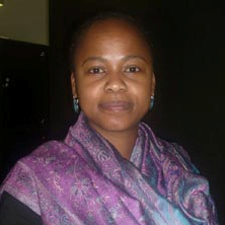 Nomusa Makhubu holds a PhD in art history and visual culture from Rhodes University, South Africa. A senior lecturer of art history at the University of Cape Town’s Michaelis School of Fine Art, Makhubu studies art interventionism, popular culture, and social engagement in African visual art. She is the recipient of the ABSA L’Atelier Gerard Sekoto Award (2006), the Prix du Studio National des Arts Contemporain, Le Fresnoy (2014) and the First Runner Up in the Department of Science and Technology (DST) Women in Science Awards (2017). Makhubu is a member of the South African Young Academy of Science and Chair of the Africa South Art Initiative. In 2016, she was a fellow of the American Council of Learned Societies and an African Studies Association (ASA) Presidential Fellow. Makhubu is currently an Institute for Creative Arts fellow (University of Cape Town) and a Mandela-Mellon Fellow at the Hutchins Center for African and African American Studies, Harvard University.
Nomusa Makhubu holds a PhD in art history and visual culture from Rhodes University, South Africa. A senior lecturer of art history at the University of Cape Town’s Michaelis School of Fine Art, Makhubu studies art interventionism, popular culture, and social engagement in African visual art. She is the recipient of the ABSA L’Atelier Gerard Sekoto Award (2006), the Prix du Studio National des Arts Contemporain, Le Fresnoy (2014) and the First Runner Up in the Department of Science and Technology (DST) Women in Science Awards (2017). Makhubu is a member of the South African Young Academy of Science and Chair of the Africa South Art Initiative. In 2016, she was a fellow of the American Council of Learned Societies and an African Studies Association (ASA) Presidential Fellow. Makhubu is currently an Institute for Creative Arts fellow (University of Cape Town) and a Mandela-Mellon Fellow at the Hutchins Center for African and African American Studies, Harvard University.
For more information about the CAA-Getty International Program, please contact project director Janet Landay at jlanday@collegeart.org or 212-392-4420.



